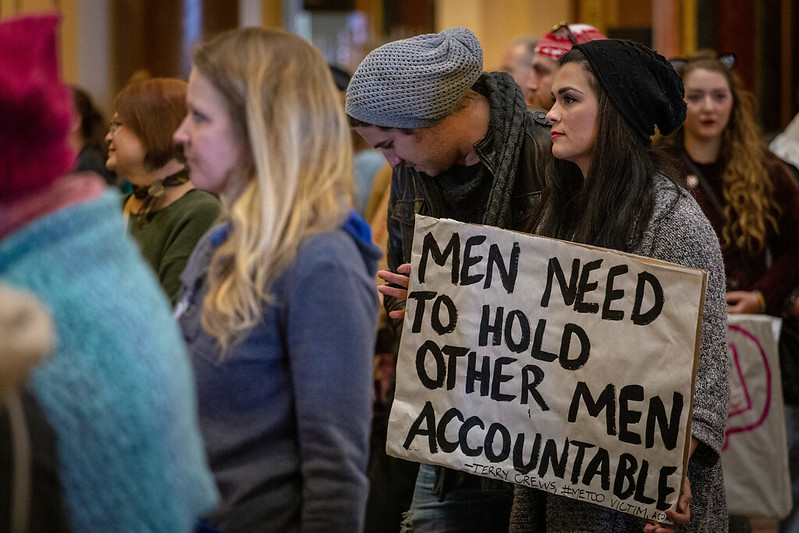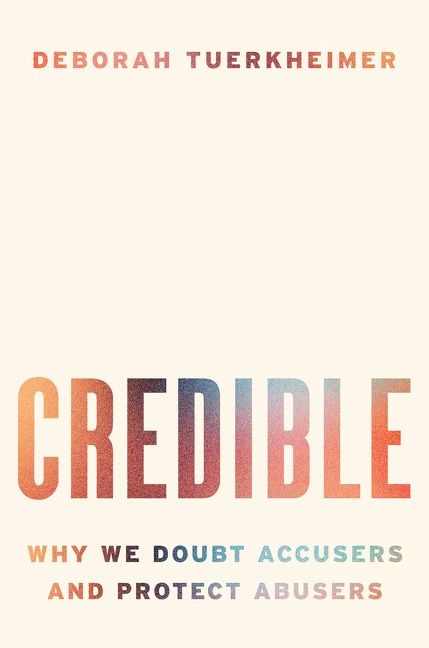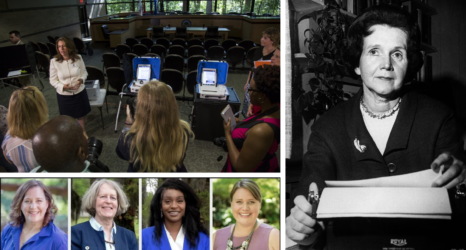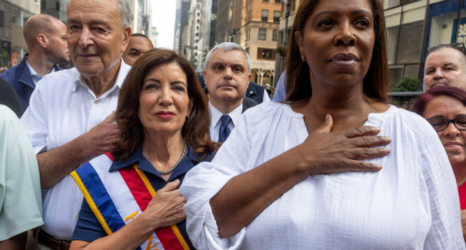Simply by being, a woman can activate our blaming impulses.

When it comes to sexual assault and harassment, women are routinely held responsible for controlling men’s urges, turning misconduct into the fault of the victim rather than the abuser. As a matter of course, survivors are faulted for dressing provocatively, smiling, not finding a way to stop the assault or harassment and so forth. Even women who do next to nothing may nonetheless be blamed for their abuse, since their existence alone is seen as temptation enough. Simply by being, a woman can activate our blaming impulses.
Sexual harassment law reinforces this cultural fixation on women who invite their abuse. The leading case on “unwelcomeness” is Meritor Savings Bank v. Vinson, which the U.S. Supreme Court decided in 1986. The story begins more than a decade earlier, when 19-year-old Mechelle Vinson was hired to work as a teller trainee at a small bank in Washington, D.C. Vinson, who is Black, had grown up poor and surrounded by violence.
A few months after Vinson began working at the bank, her manager, Sidney Taylor, demanded she have sex with him. She later recounted that when she refused, Taylor threatened her. “I said, ‘I don’t want to go to bed with you.’ And he says, ‘Just like I hired you, I’ll fire you. Just like I made you, I’ll break you, and if you don’t do what I say then I’ll have you killed’ … And that’s how it started.”
Over the next two and a half years, Taylor subjected Vinson to “repeated outrages of sexual attention,” including “40 or 50 episodes” of forced intercourse. Several times, she said, he raped her so violently that she sought medical attention. Over and over again, she asked him to stop.
Vinson chose not to file a formal complaint because she couldn’t risk losing her job. She recalled thinking, “My God I need my job.” When the stress from the harassment and assaults forced her to take sick leave, she was fired. She later sued the bank and Taylor—and everyone fully denied the accusations.
The judge in the case allowed the defendants to introduce evidence that Vinson wore “low-cut dresses,” and “extremely tight pants.” The judge also permitted a co-worker to testify that Vinson “had a lot of sexual fantasies” and “talked quite a bit about sex.” The judge heard from Vinson and from several coworkers who witnessed repeated incidents of her abuse and experienced similar misconduct themselves.
At the end of the trial, the judge ultimately ruled any “intimate or sexual relationship” between Vinson and Taylor was “a voluntary one by plaintiff having nothing to do with her continued employment.” Put simply, Vinson “was not the victim of sexual harassment and was not the victim of sexual discrimination.”
Why wasn’t Vinson credible when she claimed that Taylor’s sexual advances and abuse harmed her? Evidence admitted at trial about her dress and sexual fantasies tapped into longstanding myths about Black women’s promiscuity. Vinson was cast as a woman who deserved her abuse “because she asked for it, we know she asked for it, because she is a lascivious woman,” her trial attorney had objected.
Vinson’s case made its way to the Supreme Court, posing the question whether sexual harassment in the workplace violates federal antidiscrimination law. In a landmark victory for victims, the Court held for the first time that sexual advances constitute a form of unlawful discrimination when they create a “hostile work environment.”
The Court wrote: “The gravamen of any sexual harassment claim is that the alleged sexual advances were ‘unwelcome,’” instructing that the “correct inquiry” is whether Vinson “by her conduct indicated that the alleged sexual advances were unwelcome.”
The creation of the unwelcomeness test tempered Vinson’s win. The focus would now be trained on her and on all accusers going forward. What mattered was how Vinson showed Taylor that his sexual overtures were not welcome. To this end, the Court blessed a searching inquiry into the victim’s conduct and appearance. Vinson’s “sexually provocative speech or dress,” was said to be “obviously relevant” to whether she found the sexual advances unwelcome.
This legal framework—which the Supreme Court handed down to the lower court resolving Vinson’s claim—remains in place today.
It’s a framework that disadvantages some women more than others. Regardless of what they wear, Black women are more likely to have their clothes considered “inappropriate” for the workplace. This cultural bias is aggravated by sexual harassment law, which connects what courts commonly refer to as “sexually provocative speech or dress” to the idea that an accuser welcomed the advances.
The final phase of Mechelle Vinson’s litigation (which ultimately settled out of court) was shaped by the Court’s newly announced unwelcomeness standard, which her lawyer immediately realized would impose an unfair burden—not only on Vinson, but on countless victims going forward.
The question for a jury, if a case makes it this far, is whether the victim’s conduct is sufficient to demonstrate unwelcomeness. This inquiry readily lends itself to blame-shifting. Particularly when the relationship between the harasser and his target is hierarchical, an accuser may not be positioned to do enough to be seen as a victim rather than an enabler.
When victims are especially vulnerable, they are unlikely to satisfy the legal burden imposed on them. Without power in the workplace, a woman will find it difficult to confront her abuser about the unwelcomeness of his behaviors, leaving her a prime target for whatever comes her way.

Blame-shifting gives a gigantic pass to abusers—and it’s a dominant feature of our culture and our law. A primary function of what I call the credibility complex is to hold accusers responsible for their abuse while absolving the offender of responsibility. This preserves familiar structures—however hierarchical—in which the collective, chiefly its most powerful members, is deeply invested.
From the book CREDIBLE: Why We Doubt Accusers and Protect Abusers by Deborah Tuerkheimer. Copyright © 2021 by Deborah Tuerkheimer. Published by Harper Wave, an imprint of HarperCollins Publishers. Reprinted by permission.
Up next:





